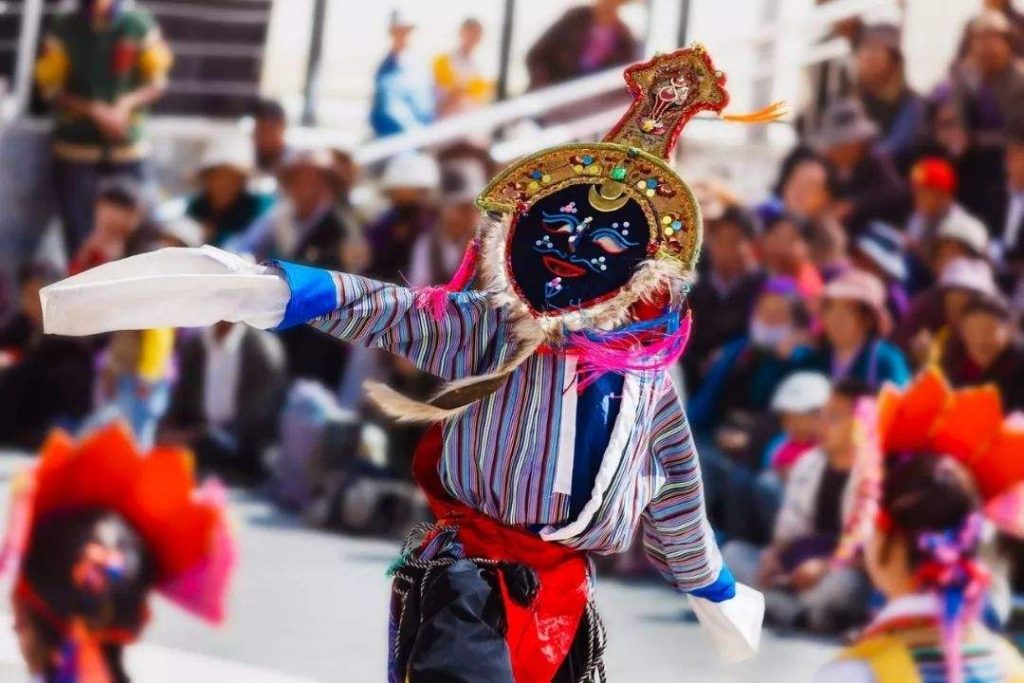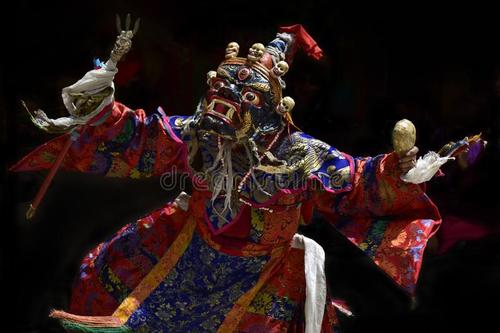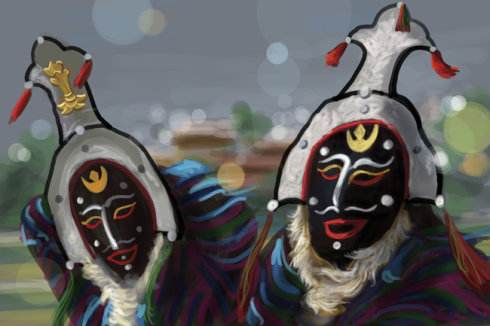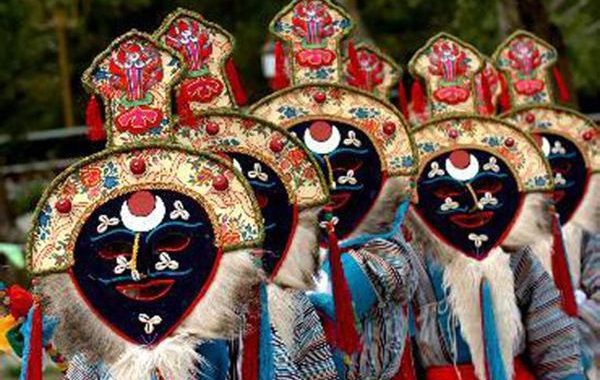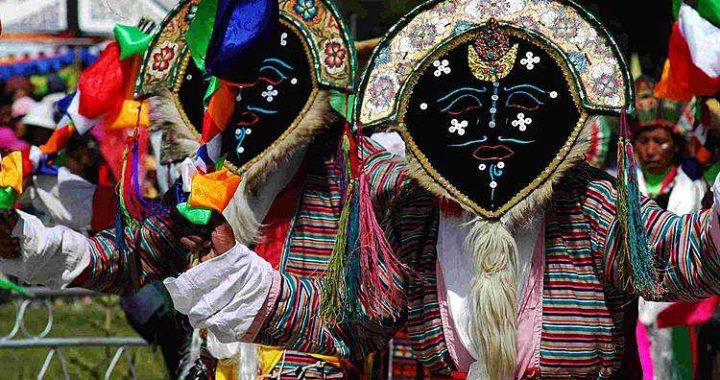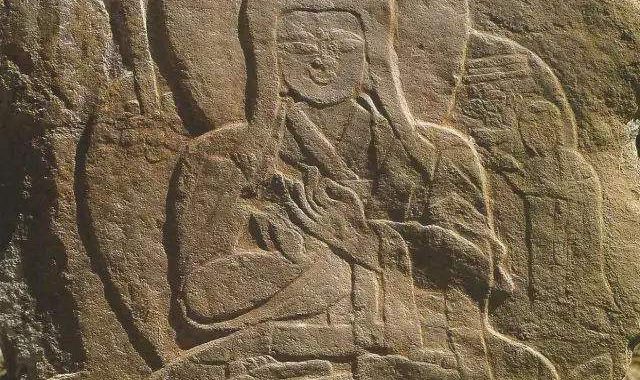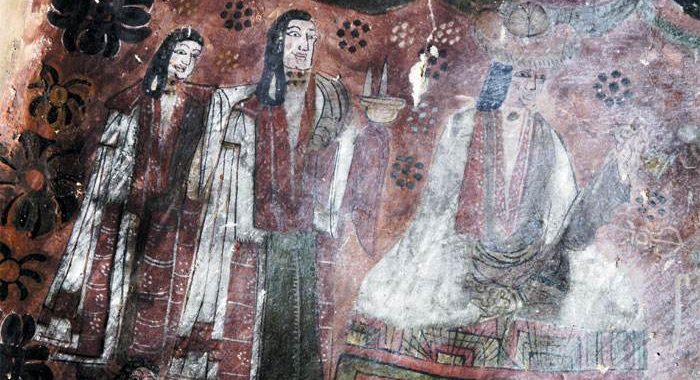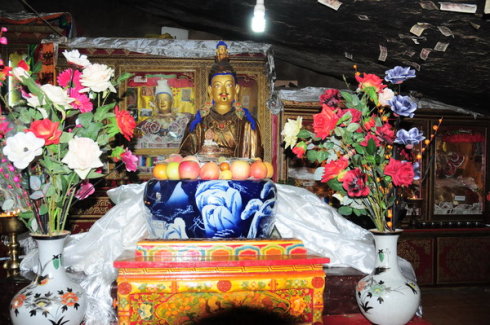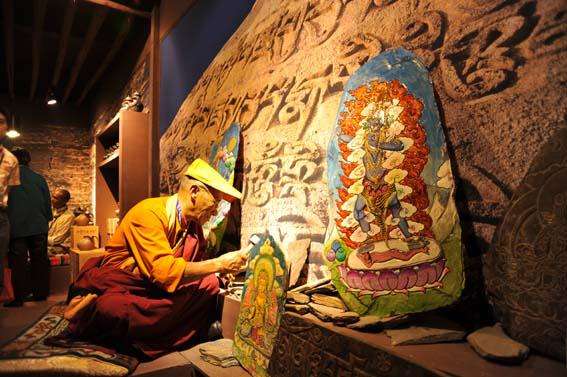The formation of Tibetan opera
2 min readDifferent opinions exist about the evolution of Tibetan opera.
According to folklore, white-mask Tibetan opera was created by Thangtong Gyalpo. In fact, in the 8th century, folk songs, dances and acrobatics of the Tibetan ethnic group, including religious performances, reached a level of sophistication. This nurtured conditions for the formation of the highly complicated opera of Tibet. On a fresco at the Samye Monastery, the images of performing figures and life scenarioswere marked with “Short Gar”in Tibetan language, meaning singing and dancing and opera. The fresco also had scenes of a white-mask Tibetan opera performance, reflecting the consecration ceremony of the Samye Monastery.
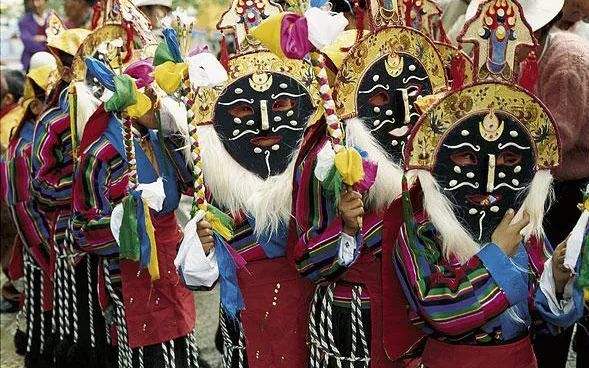
The performance of white-mask Tibetan opera on a fresco of the Samye Monastery
The portrait of Thangtong Gyalpo, the founder of Tibetan opera
The maturity of Tibetan opera
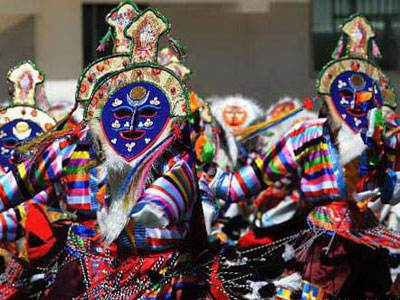
As for the development and maturity of the Tibetan opera, most scholars of Tibetology and Tibetan opera believe that in the 14th-15th century, eminent monk Thangtong Gyalpo of the Kagyu Sect of Tibetan Buddhism created and developed blue-mask Tibetan opera and enabled it to mature.
According to Biography of Thangtong Gyalpo and folk tales about him
, Monk Thangtong Gyalpo was proficient in Pancavidya, loved to travel and built many iron-chain bridges on Tibetan rivers. To raise building funds, he arranged seven sisters of bridge builders to compose programs and launch fundraising performances in Tsang. During this period, white-mask Tibetan opera gradually evolved. Later, when the Tashitsi Iron Bridge was under construction in Xaitongmoin County, Thangtong Gyalpo again raised money through performances. In his later years, he returned to his base monastery, the Riwoche Monastery in Ngangring County, and created blue-mask Tibetan opera, beautifying the mask and integrating the three roles of “Wenba,””Jialu”and “Lhamo”to create the opening ritual of blue-mask Tibetan opera, which has been preserved to this day-and started to compose and perform Buddhist stories.
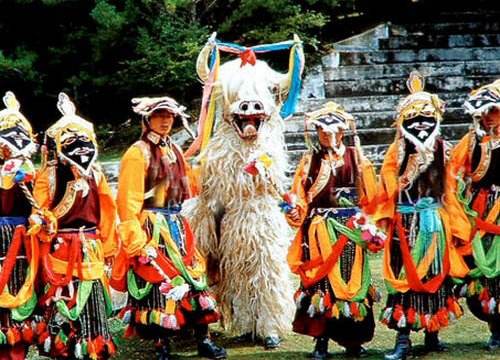
During the local regime of Galdan Phobrang in the Qing Dynasty, white-mask and blue-mask Tibetan opera further developed courtesy ofthe esteem and and support given by the 5th Dalai Lama and developedinto different sects and the tradition of all renowned Tibetan opera troupes gathering at “Drepung Shoton”in Lhasa was established. Tibetan opera originated, formed and developed from U-Tsang, the main origin of Tibetan culture, and gradually spread to various areas such as Pulan, Yatung, Cona and Chagyab, and the Tibetan areas of Qinghai, Gansu, Sichuan and Yunnan provinces, and neighboring countries such as India, Bhutan and Nepal. As Tibetan opera grew into many types, it spread and developed over time in various areas and had a great influence on the formation and development of operas of other ethnic groups such as the Tibetan opera of Derge, Chamdo and Monpa opera.
